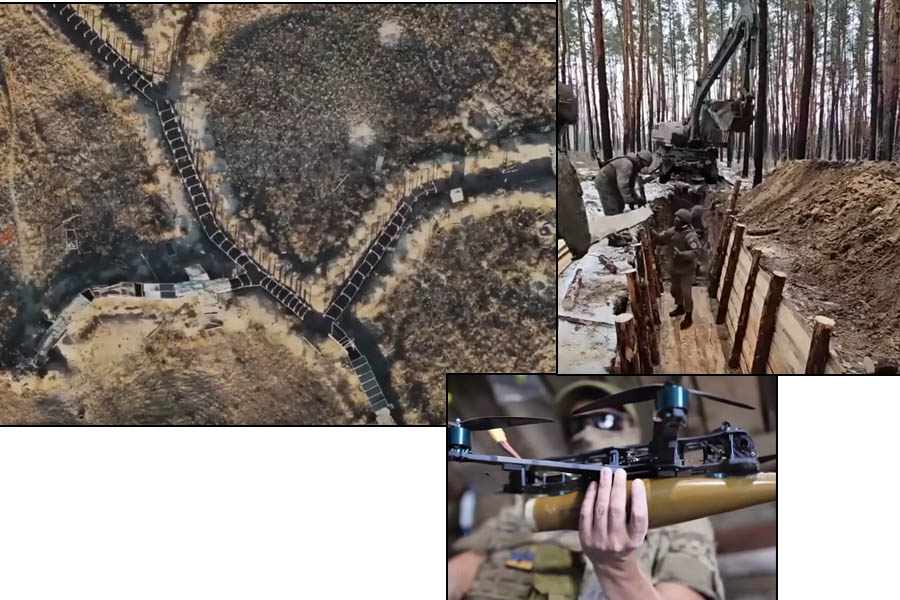
The ongoing conflict between Russia and Ukraine has seen a significant evolution in warfare tactics, with drone warfare emerging as a pivotal aspect of the battleground. In this digital-age competition for dominance in the skies, drones have transcended their role as mere aerial observers to become essential assets in gaining real-time intelligence and strategic advantage.
The deployment of drones in the Russo-Ukraine conflict is akin to a high-stakes cat-and-mouse game, with Ukrainian forces strategically employing nimble drones to weave through the complexities of war and gather vital information. These unmanned aircraft, with their sleek designs resembling predators, navigate contested skies with precision, scanning for targets and providing invaluable reconnaissance.
In response, Russian forces have adopted defensive measures, including the clever fortification of trenches with protective screens to conceal troop movements from Ukrainian drones. This intricate dance of warfare, where drones move like pieces on a chessboard, adds a futuristic dimension to the conflict, influencing how warfare is perceived in the 21st century.
Russia's integration of protective screens signifies a paradigm shift in warfare, introducing strategic complexities and challenging conventional tactics. While these screens may not constitute physical barriers against direct attacks, they serve as deterrents, complicating precision targeting and impeding reconnaissance efforts.
However, the effectiveness of Russia's defensive maneuvers is not without challenges. Ukrainian forces have demonstrated adaptability by developing innovative protection measures and escalating the use of drones armed with grenades. The evolving dynamics on the frontline demand greater professionalism from UAV operators and drive the need for more powerful drones capable of carrying and dropping mortar shells.
As the conflict unfolds, the effectiveness of Russia's defensive tactics remains a critical point of analysis, with implications extending far beyond the battlefield. The outcome of this technological chess match will shape the narrative of modern warfare, influencing strategies adopted by nations navigating the complexities of digital-age conflicts.
In conclusion, Russia's current strategic maneuver in fortifying trenches with protective screens adds a layer of complexity to the Russo-Ukraine conflict. This development underscores the evolving nature of warfare in the digital age and highlights the importance of technological innovation in shaping military strategies.
Message To The Readers:
Drone Warfare Dominance: The article highlights how drones have become central to the Russo-Ukraine conflict, transcending their traditional role as aerial observers to become essential assets for real-time intelligence gathering and strategic advantage.
Cat-and-Mouse Dynamics: It describes the conflict as a high-stakes cat-and-mouse game, where Ukrainian forces strategically deploy nimble drones to gather intelligence, while Russian forces employ defensive measures such as protective screens to conceal troop movements.
Technological Adaptation: Both sides demonstrate technological adaptation, with Russia showcasing adaptability through increased drone production and cutting-edge designs, and Ukraine introducing innovative protection measures and escalating the use of armed drones.
Strategic Implications: The article emphasizes the strategic implications of Russia's defensive tactics, highlighting the complexity they add to precision targeting and reconnaissance efforts. It suggests that the outcome of this technological chess match will shape the narrative of modern warfare and influence strategies adopted by nations in digital-age conflicts.
Thank you for reading: globalpostheadline.com | If you want to advertise your Company, Events, Movies, Products, Hotels, Travel Packages Let us know